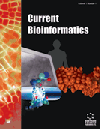
Full text loading...
We use cookies to track usage and preferences.I Understand
Inflammatory Bowel Disease (IBD), encompassing ulcerative colitis and Crohn’s disease, affects millions worldwide. Characterized by a complex interplay of genetic, microbial, and environmental factors, IBD challenges conventional treatment approaches, necessitating precision medicine. This paper reviews the role of bioinformatics in leveraging transcriptional data for novel IBD diagnostics and therapeutics. It highlights the genomic landscape of IBD, focusing on genetic factors and insights from genome-wide association studies. The interrelation between the gut microbiome and host transcriptional responses in IBD is examined, emphasizing the use of bioinformatics tools in deciphering these interactions. Our study synthesizes developments in transcriptomics and proteomics, revealing aberrant gene and protein expression patterns linked to IBD pathogenesis. We advocate for the integration of multi-omics data, underscoring the complexity and necessity of bioinformatics in interpreting these datasets. This approach paves the way for personalized treatment strategies, improved disease prognosis, and enhanced patient care. The insights provided offer a comprehensive overview of IBD, highlighting bioinformatics as key in advancing personalized healthcare in IBD management.

Article metrics loading...

Full text loading...
References


